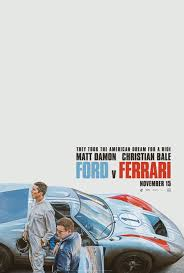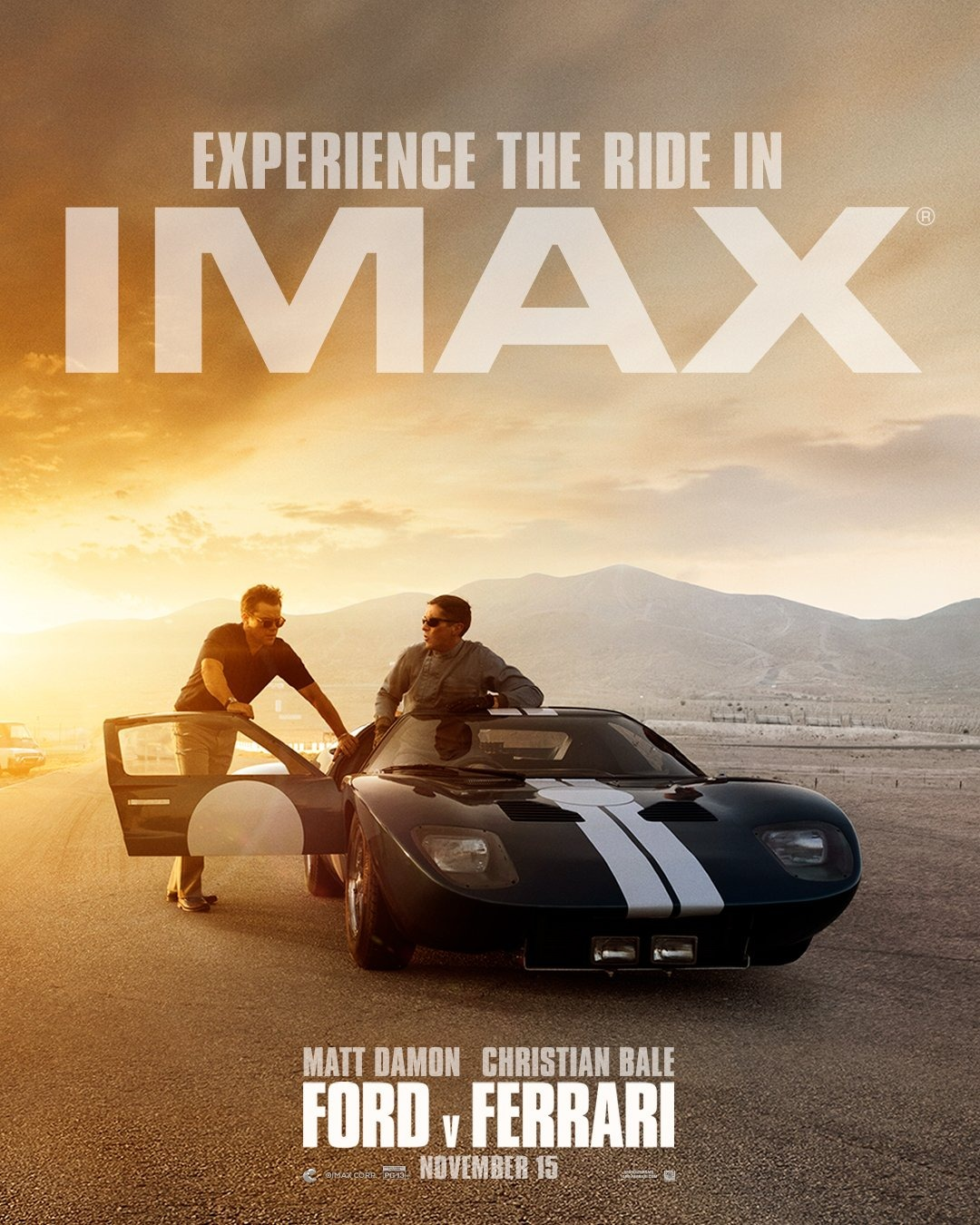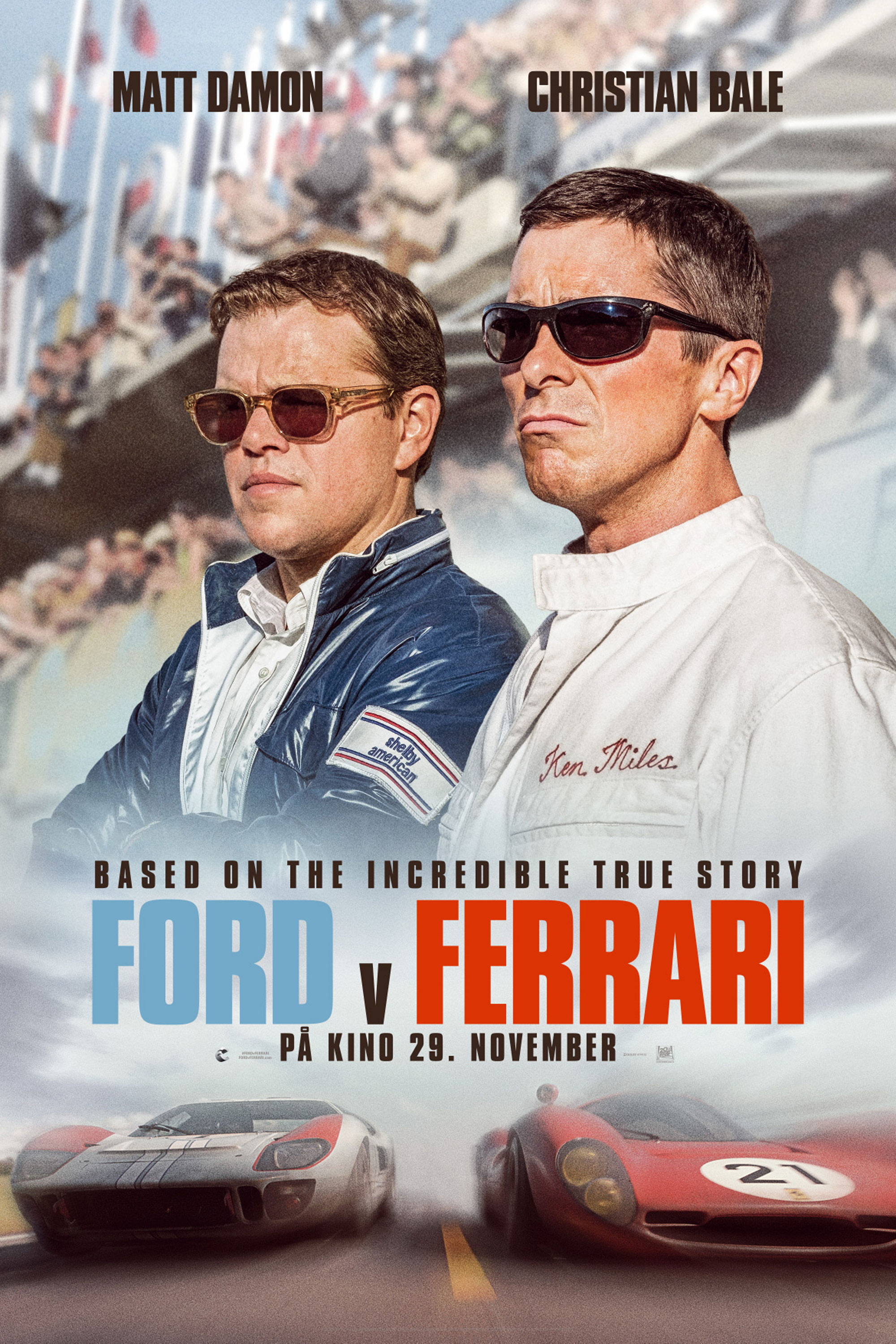On your marks, get set, go: a flag waves, and leaping over the white line, the racers rush to take their seats – this is how the 24 Hours of Le Mans begins. Teams have to circle the track for a full day – this is a competition not only of speed but also of endurance. In a way, director James Mangold’s “Ford v Ferrari” also embodies the main principles of the race, seeking a balance between pace and resilience. The race itself only starts in the third act, but before that, there’s an even more complex challenge to overcome: preparing for the start. Once, constructor Carroll Shelby (Matt Damon) and racer Ken Miles (Christian Bale) combined their passion and skill under the Ford banner to be the first to cross the finish line in the 24-hour race.

The film itself premiered at the Toronto Film Festival and, approaching awards season, hit theaters with blatant ambitions for statuettes of various calibers. The director prepared the film according to the ideal and time-tested Oscar recipe: an inspiring true story at the heart of the script, two A-list actors in the lead roles, the drama of choice, and the sacrifice of any compromise. Nerve and dynamics, perfect technical equipment – the audiovisual solution can make even a viewer indifferent to cars dizzy. At the same time, “Ford v Ferrari” is a biopic, a drama, a comedy, and a buddy movie, but by and large, it doesn’t fully belong to any of these categories. However, the film’s body doesn’t fall apart into spare parts: each detail is in its place, creating a single, functional mechanism.

The Real Engine Behind the Rivalry
The engine is the real story of the confrontation between automotive conglomerates. Henry Ford II found himself trapped and on the verge of ruin; his cars were no longer fashionable (or reliable). A merger with Ferrari could have saved the situation, but they slipped off the hook at the last moment. Now, revenge is needed, and quickly. And this can only be achieved by wiping the nose of the main opponent – Enzo Ferrari, who refused to make peace. To break through at Le Mans (Ferrari had secured a long series of victories for its brand), retired racer Carroll Shelby, who once won the 24-hour competition, was brought in, and he dragged along pilot and mechanic Ken Miles, a man with a fractious disposition and clearly not a team player. But Miles, despite his lack of diplomacy, can identify flaws in the new FORD GT 40 model by the sound of the engine.

More Than Just Speed: A Deeper Dive
The search for compromise doesn’t stop at creating the perfect racing car (solving the same equation: speed plus endurance) but extends to a much larger confrontation between the general and the particular. Mangold reflects on principles, fame, concessions, and courage, if not in an old-fashioned way, then in a classic interpretation. His masculinity may be slightly outdated but is devoid of toxicity – he reserved this quality for the costs of capitalism. At the heart of the race, he puts the question of honor, almost in a mythological interpretation, where a man needs a feat to become a hero and identify himself. The scenes on the move change the speed mode: a thrilling local race is replaced by a smooth braking closer to a domestic evening, where Ken shares piloting secrets with his son, and again picks up speed in the Ford management offices, to accelerate on the test track and exceed the revs already at Le Mans. Sometimes, almost the only woman in the story appears in the frame – Ken Miles’ wife, Molly (Caitriona Balfe), who, although she stayed at home, would overtake any racer or bring soda after the “fight” if given the chance.
Performances and the Elusive Magic
Christian Bale has transformed again for the role, but it seems for the last time. Matt Damon really grasped Shelby’s manner and organic nature, but overall, the magic of the tandem between the actors didn’t happen – there wasn’t enough chemistry, even though everyone was in their place. And this, perhaps, is the invisible and elusive magic that is commonly called the magic of cinema – the only thing that “Ford v Ferrari” lacks to win all the races in the awards race. James Mangold, who has performed in different weight categories (he has “Logan,” “3:10 to Yuma,” and even the romantic “Kate & Leopold” to his name), has constructed an ideal film, where every centimeter of the body is verified and the best fuel is poured in. However, in all its technicality, it lacks the recklessness and daring courage to truly become a legend for centuries, and “Ford v Ferrari” is unlikely to go down in history as a feat. But the picture will not become ordinary either – an opus of conscience, made in good faith, once again says that sometimes not only victory is important, but also participation.